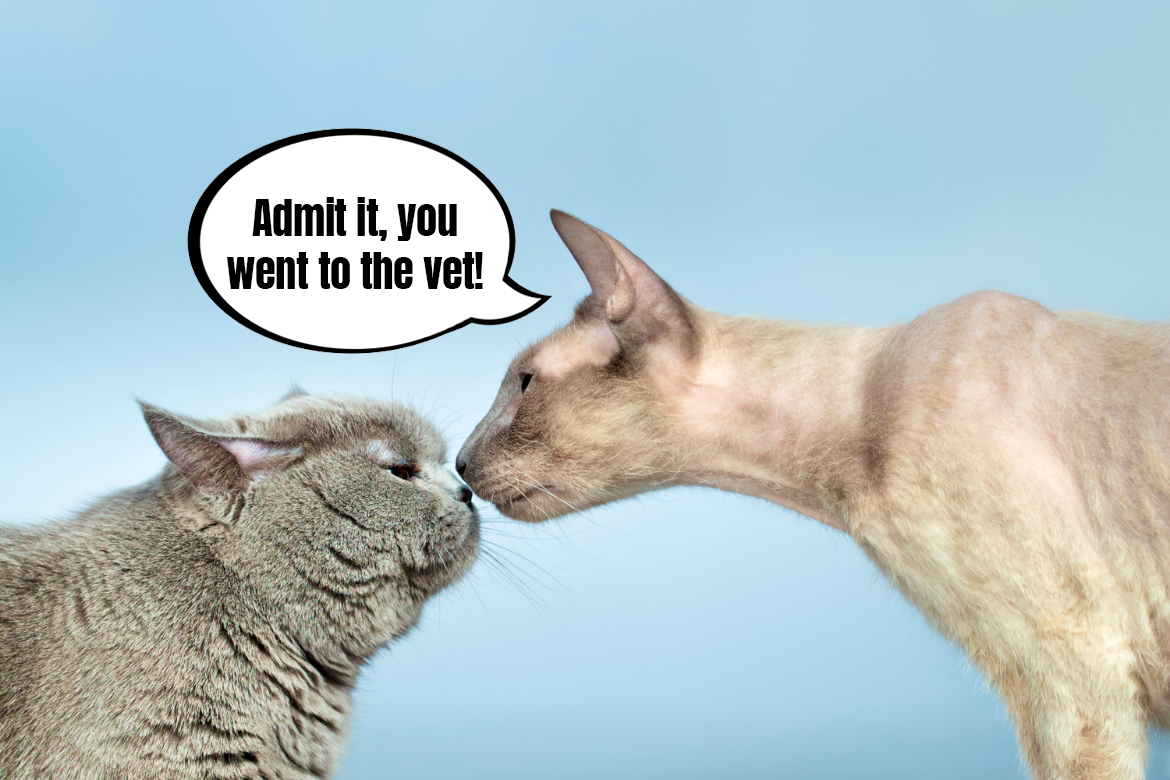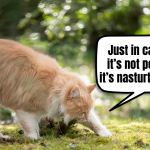If cats were to talk to each other, it probably would be very quiet around them. And it’s not because our furry friends have nothing to say to each other – on the contrary, their communication can be quite elaborate. But in the cats’ world, the primary form of communication is not sounds, but smell – meowing is reserved mostly for people and kittens. What information can cats convey through pheromones and what does the world look like from a cat’s nose perspective? Come and sniff with us, fabCats!
Cats smell more
Compared to people, cats have a much more sensitive sense of smell and with their noses, they can sniff out a lot. While we observe and examine everything by touching things, cats, just like many other animals, use their sense of smell – in everyday communication and spatial imagination, they convey information through smells and communicate through it with other cats and everything else around them. Even better, cats’ smelling abilities are supported by the Jacobson’s organ (the vomeronasal organ), which allows them to “taste smells” and examine closely all the pheromones left around by other cats. With such an arsenal of abilities, no scented information can escape the curious cat.
And what information can cats collect from their surroundings through their sense of smell? Their noses help cats to communicate with other cats – through marking their territories, cats show others who is the boss, if the place is safe or if there are any potential partners around, though with latter, in a home setting and with neutered cats, it’s mostly about identifying the cat buddies it’s worth hanging out with. Through smells, cats can also show different emotions – their scents convey if they are stressed, unwelcome or when they’re nervous or happy. We, the Guardians, have to read such reactions based on the cat’s body language, but for other cats, it’s all visible through scents first.
World seen through a cat’s nose
Smelling is a natural way for cats to explore their surroundings. Because of that, there’s no surprise that the cat’s first reaction to seeing their Hooman is to rub against their legs or to scratch the couch where they sit a lot – cats want to integrate their scents with our scents and leave their unique pheromone composition on us, showing clearly that: “It’s my person. It’s his couch, but also my couch”. And though it’s hard to research everything that a cat’s nose can smell, based on the extensive research over the years we can draw conclusions that there are some scents that cats are very attracted to (e.g. the smell of meat or catnip), but also some that are deterring, e.g. citrus scents or vinegar. With the help of their noses, cats can check their food – they often hover over their food bowl, smelling everything and then grabbing the first bite. They can even sit by the bowl, mouth open, taking in all the smells with the help of the Jacobson’s organ – the exquisite qualities of the food must be checked on every level 🙂
If you want to save your couch from a kitty-pocalipse, a sturdy scratcher is a must! More info about the role of scratchers as scent soakers in the cat world is already on our blog:
And what if a cat comes into a new, completely foreign territory? Their nose will, once again, play a vital role! A new home requires for all its corners to be investigated – your cat needs to check if everything is safe, if the place doesn’t belong to another cat and if securing the territory for themselves is necessary. And this is why moving might be a stressful event for any cat – a new place comes with new stimuli and they hit the cat quite intensively. If we have the option to move a cat with all of their old things that have already been soaking in theirs and our scents for a long time, moving will go much more smoothly and should be less stressful overall.
The mysterious pheromones
Pheromones are chemicals which are the most important scent marker produced by a cat’s body for communication purposes. And it’s reading those pheromones that the Jacobson’s organ is mostly used for, making cats make the Flehmen response and sit with their mouths open to “taste the smell”. By doing that, cats can read all key information from the pheromones left around by other cats and animals – they can warn each other, build relationships and recognise one another. Cats spread their pheromones around by rubbing on things with their faces and bodies, as well as through scratching (with scent glands on their paws, they can leave a lot of information around for other cats to find) and the marking method – urinating.
Pheromones are also key when socialising cats together. When we’re introducing a new cat into the environment where another cat or group of cats have been living for a while now, it will be quite uncomfortable for the “new guy”. Here he is: an intruder in an already inhabited territory. He’s curious – maybe he could join the group. But how? How to become buddies with cats who already know each other so well. What if they don’t want me here? Or maybe it should be me who dominates in the group and makes everyone else fear me? The human’s role in this is invaluable – it’s us, cat Guardians, who can make sure the situation brings everyone as little stress as possible. Through using the help of synthetic pheromones, working with the cat group and the new cat and through slowly introducing cats to one another, e.g. by using scent exchange, the chances for a successful socialisation are much higher than if we were to simply put a new cat into a house where there’s already a settled cat group living there.
You smell different
Among cats living together, we can often observe a situation when one cat comes back from the vet and the others treat them as an intruder. Why’s that? The answer is – smell, of course! Because of the pheromones and the scents that cats collect from around them, our furry friends know if they buddy just came back from the litter box and tries to get into the cat bed with a dirty butt, or if they’ve just been to the vet and smells different – somehow like their buddy, but not exactly. And they don’t know what to think about such a cat!
Looking at the vet visit situation, it can be uncomfortable for both the cat visiting the clinic and the cats who stay at home. Pheromones of the first one will be showing stress and discomfort, they may be mixed with the scents of other cats and animals met in the vet clinic and there will be the smell of disinfectants and medicine as well. The “typical” scent of the cat will be masked, which may be a bit shocking for the cats who stayed at home. From their purrspective, the familiar scent will be poking through on the intruder, but it won’t be the established scent of the entire cat group. How may the group react? Often times they feel stressed, nervous or aggressive towards the “new” guy. And the “new” guy, though not being “new” at all, has to win back their trust. With time, they will get the group scent back and will get accepted by everyone else, but until then, there might be some tension.
Tell us, dear fabCats – can you imagine a wolrd where the most important sense for a human is not our sight, but our sense of smell? What if we had to suddenly judge everything based on its scent and pay no attention to how things look? It would be something… and cats could definitely teach us a thing or two about it. Who knows, maybe they would even share their sniffing mats with us so we can train searching for snacks?




